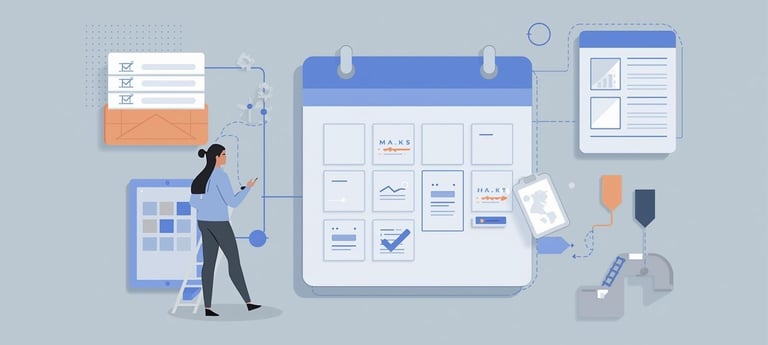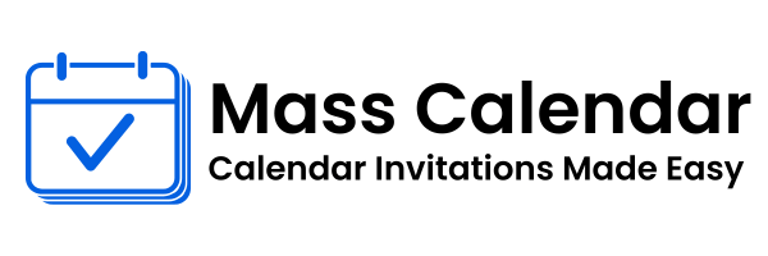The Art of Managing Mass Meeting Invites Efficiently
Every organization, big or small, depends on meetings to plan, collaborate, and make key decisions. However, as teams grow, so does the complexity of scheduling. Managing multiple invites across departments and time zones can quickly spiral into chaos. That’s why mastering how to handle mass meeting invite workflows is a crucial skill in today’s digital-first world.
BLOG
10/13/20253 min read


Every organization, big or small, depends on meetings to plan, collaborate, and make key decisions. However, as teams grow, so does the complexity of scheduling. Managing multiple invites across departments and time zones can quickly spiral into chaos. That’s why mastering how to handle mass meeting invite workflows is a crucial skill in today’s digital-first world.
This blog explores simple, practical methods for sending meeting invitations at scale whether for a company briefing, client session, or training workshop while maintaining professionalism and organization throughout the process.
Why Scheduling at Scale Is So Important
Meetings are meant to bring people together, not create confusion. When hundreds of people are involved, even minor errors in timing or communication can lead to wasted hours and lost productivity. A well-structured mass meeting invites in O365 process or similar scheduling setup ensures everyone receives accurate details and reminders.
Moreover, efficient scheduling improves attendance rates and sets the right tone before the event even begins. It demonstrates respect for participants’ time and allows them to plan their day accordingly.
Steps to Organize a Large-Scale Meeting
Define your purpose: Every meeting must have a goal whether it’s decision-making, brainstorming, or status updates.
Identify essential participants: Don’t overcrowd your invite list. Only include those who directly contribute to or benefit from the discussion.
Pick an ideal time slot: Analyze shared calendars to find overlap between attendees’ availability.
Prepare your materials: Attach documents or share agendas within the invite.
Send reminders: Automated reminders reduce no-shows and last-minute cancellations.
These steps might seem simple, but together they create a foundation for consistency and trust across every meeting.
How to Send Multiple Invites Without Overwhelm
If you often need to send multiple calendar invites, create templates that include consistent headers, tone, and structure. Templates not only save time but also ensure uniform communication across meetings.
When working across departments or clients, it’s smart to segment your audience for example, internal staff, leadership, and external partners and tailor the messaging accordingly. Clarity at every level helps participants understand their role and expectations before they even join the call.
Balancing Automation and Personalization
Modern scheduling platforms allow automation, but that doesn’t mean every message should feel mechanical. Add small touches like personalized greetings, contextual notes, or acknowledgments for participants’ contributions.
Automation ensures efficiency, but personalization drives engagement the perfect balance for any large-scale meeting.
Avoiding Common Mistakes
Even professionals make mistakes that affect attendance and engagement. Here are a few to watch for:
Overlapping times: Always check participants’ availability before confirming.
Missing links or attachments: Ensure virtual meeting details are tested and active.
Last-minute updates: Communicate changes early to avoid confusion.
Unclear agendas: Every invite should clearly explain what will be discussed.
By addressing these issues early, you create smoother and more predictable experiences for attendees.
The Role of Follow-Up
Once your meeting concludes, send a summary or minutes. This ensures key decisions and next steps are recorded and shared. It also reinforces your commitment to clear, organized communication.
Following up promptly also encourages accountability participants to remember what was discussed and can reference key points later.
How Bulk Scheduling Helps Remote Teams
In remote or hybrid setups, digital calendars are lifelines. The ability to send mass calendar invite emails or events ensures distributed teams remain aligned despite geographical distances. It keeps everyone updated with real-time changes and allows better collaboration across time zones.
For global teams, tools like time zone converters or automated scheduling assistants can minimize conflicts and improve attendance.
Final Thoughts
Scheduling may seem like a small administrative task, but it’s one of the most powerful tools for effective collaboration. The skill to manage mass meeting invite workflows efficiently transforms how teams interact, plan, and execute ideas.
By applying structure, empathy, and best practices to your scheduling process, you ensure that meetings aren’t just another obligation, they become organized, purposeful, and productive. Whether you manage corporate schedules or creative brainstorming sessions, mastering large-scale invitation management is the key to smoother communication and better outcomes.
MassCalendar.in
Send Bulk & Mass Calendar Invites Instantly
CONTACT
Meetings
+44 (0) 203 916 5117
© 2025. All rights reserved.
Help?
